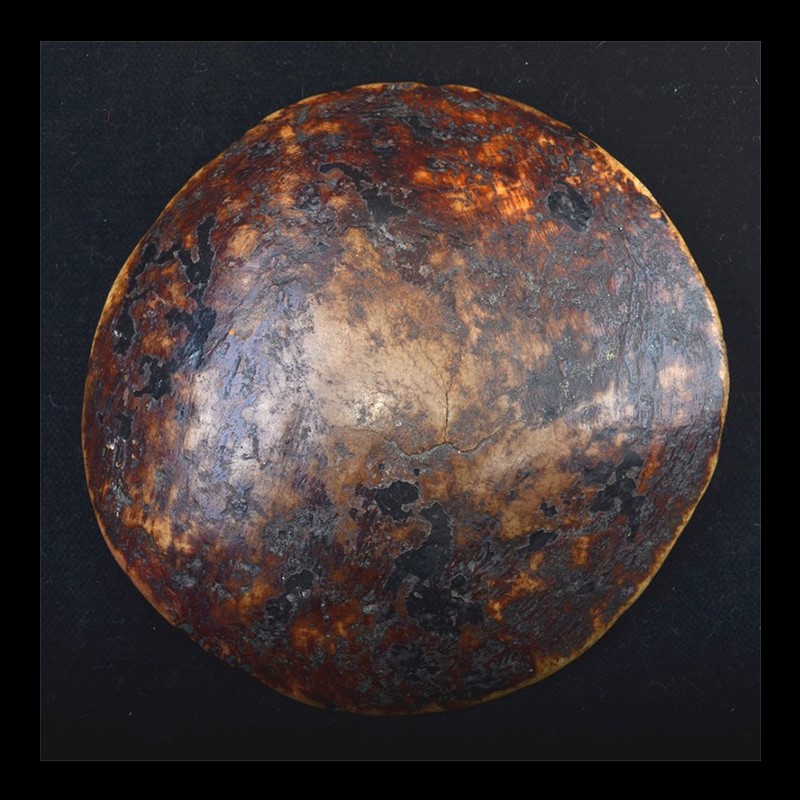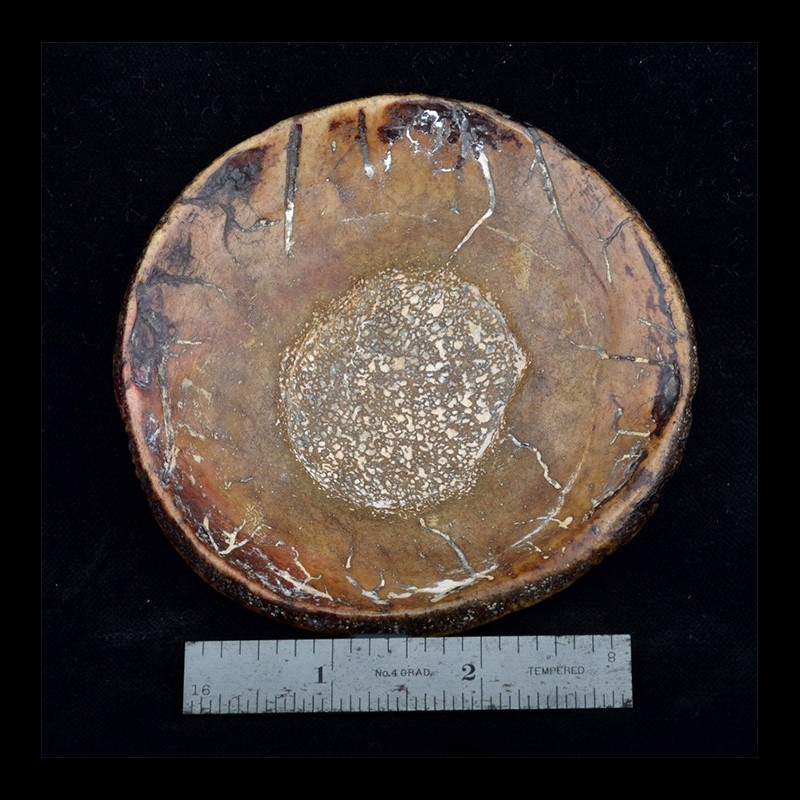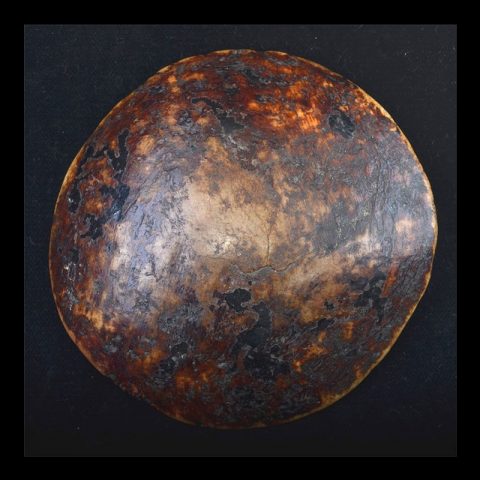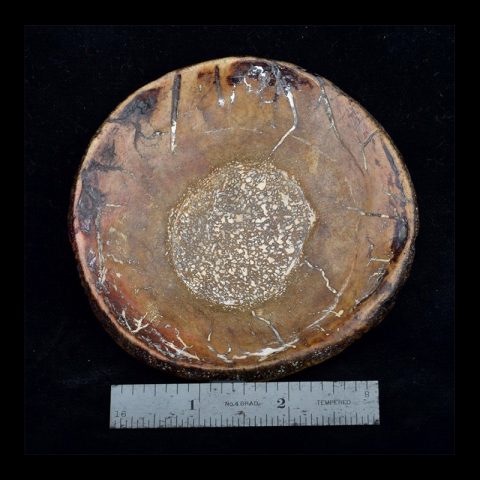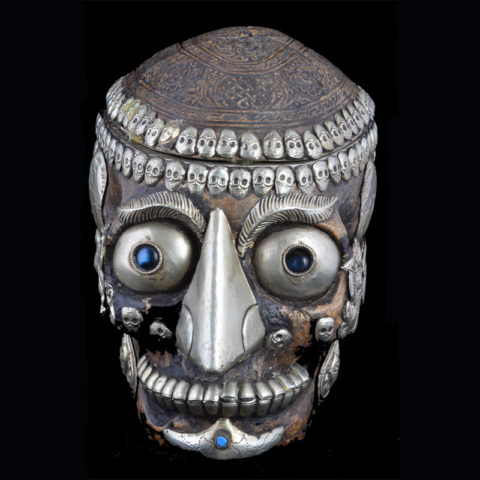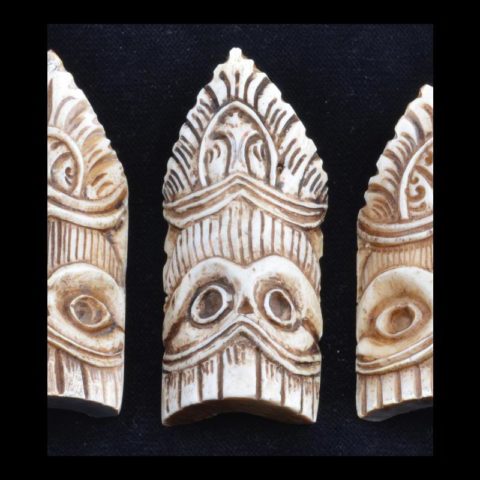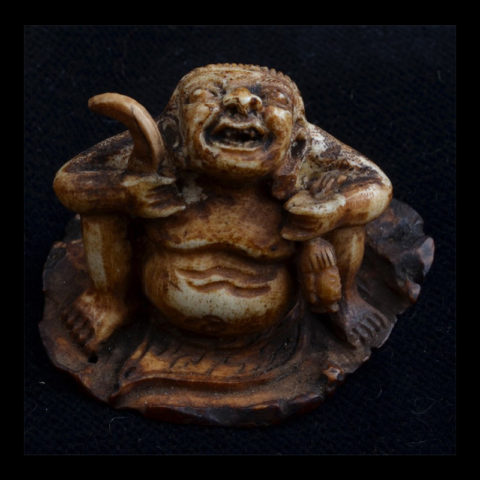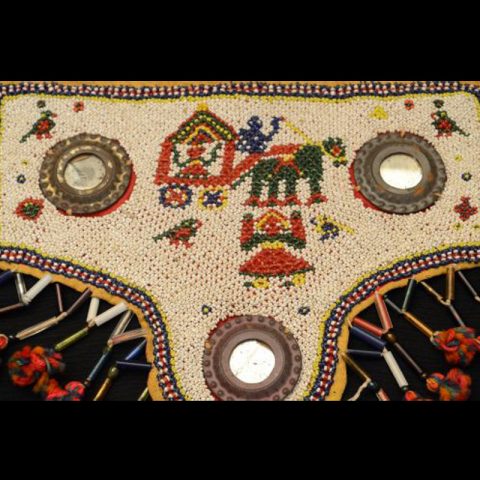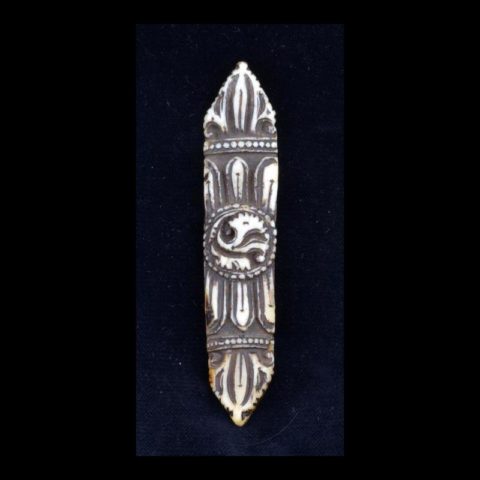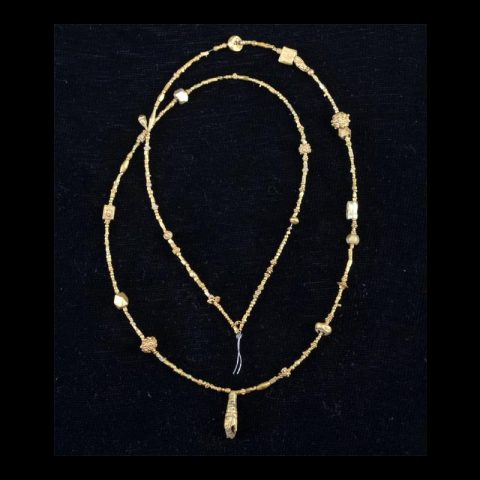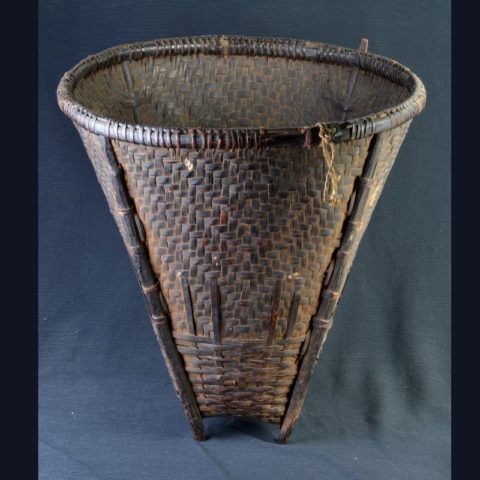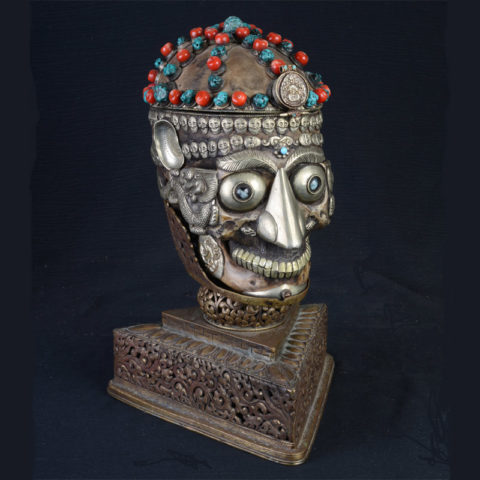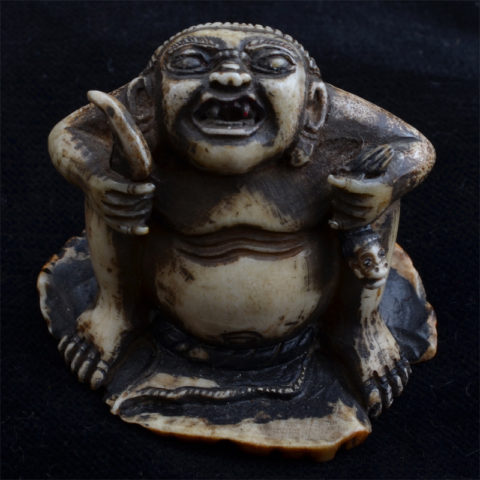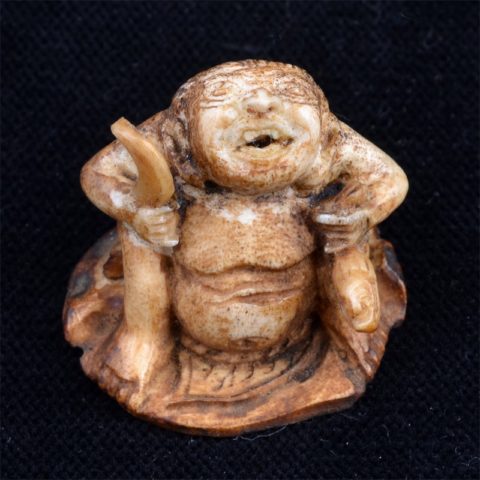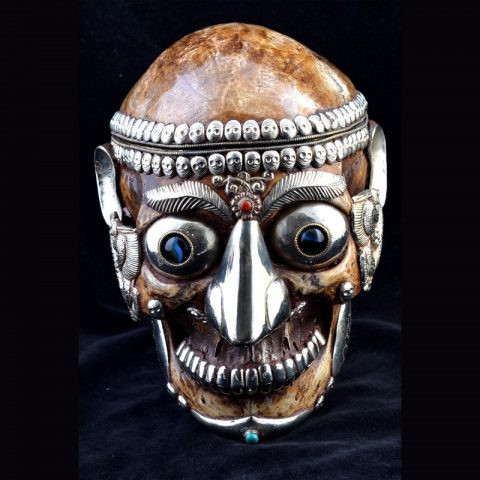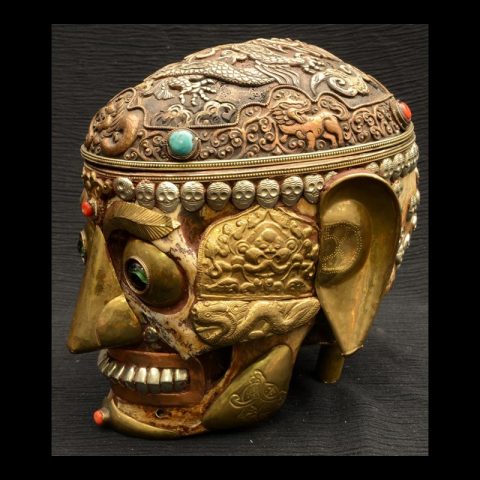Description
Cultural Origins and Historical Significance
The Antique Chin Human Skull Kapala is a remarkable artifact that traces its origins to the Chin people of Burma. The Chin, who migrated to Burma in the late ninth century, are known for their unique spiritual practices. This kapala, or skull bowl, played an integral role in their Bonpo shamanistic rituals. These rituals were steeped in spiritual and cultural symbolism, making the kapala an essential ceremonial item.
Artistry and Usage
This antique kapala showcases signs of extensive use as a mortar, with a deeply worn interior that bears witness to its utilitarian purpose. Often used to grind herbs and other substances for rituals, it carries a rich history in every groove and contour. The exterior, originally painted, now features a smooth, polished surface—a testament to years of handling and reverence.
Dimensions and Unique Features
Carved from the crown of a human skull, this kapala typically measures between 4 and 4 1/2 inches. Its small size reflects the craftsmanship of its makers and the practical needs of its ritualistic purpose. This particular piece also exhibits a distinct patina, adding to its authenticity and aesthetic appeal.
A Collector’s Treasure
Whether you’re a historian, collector, or cultural enthusiast, the Antique Chin Human Skull Kapala represents an opportunity to own a piece of cultural heritage. Sourced from Burma, it carries the weight of history and the mystique of ancient rituals.
Embrace the history and craftsmanship of this rare artifact, a tangible connection to the spiritual practices of Burma’s Chin people.

